Haters gonna hate when cedar fever starts
It’s coming…the dreaded cedar fever season in central Texas. Soon a lot of Austinites will be sniffling, sneezing, itching, and rubbing at watery, red-rimmed eyes, all because it’s mating season for the notorious Ashe juniper (Juniperus ashei), commonly known as mountain cedar or just plain cedar. Cedar fever season is worst in central Texas from December to February, sending sufferers running to the allergist for shots or the pharmacy for drugs and Neti pots.
Physical misery can cause a lot of hate. Many of my clients who have cedar trees speak of cutting them down. There’s at least one website devoted to cedar hatred, called People Against Cedars, although it looks as if it’s no longer updated, so maybe they had a change of heart.
It’s really not fair to hate on all Ashe junipers though. Did you know that there are male and female trees, and only the male trees produce the pollen to which so many of us are allergic? The two photos above show female cedars, which produce attractive, glaucous, berry-like seed cones, a food source for cedar waxwings, American robins, and other wildlife. Male cedars have small golden cones instead (this website has pictures of male cones), which release the dreaded pollen in a cloud when conditions are right — typically cold and windy.
I agree that there are many good uses for dead Ashe junipers. Unpeeled, its trunks and bigger limbs make an excellent building material for cantinas, like this one in Lucinda Hutson’s garden…
…and porch supports like the ones on Green Hall in my former garden.
They also make long-lasting, insect- and rot-resistant fence posts…
…and coyote fences, like the one in my back garden that hides an ugly chain-link fence.
Intact dead cedars make excellent bottle trees, like this one in Jennifer and David Phillips’s garden.
But I like live cedars just as well, especially when nicely pruned to show off their handsome, shaggy trunks.
Swinging beneath one would be fragrant and shady.
And how sad would it be not to have cedars to make into Christmas trees along Loop 360?
So from one cedar-fever sufferer to all you others, let’s give the Ashe juniper a chance. At least the female tree. It’s an evergreen, native tree that adds much natural beauty to our winter landscape and provides habitat for the endangered golden-cheeked warbler. It’s believed to create nursery-like conditions for the rare but beautiful Texas madrone as well. And yes, I’ve read the reports of its water-sucking nature, but that remains controversial. Sure, it’s opportunistic in the absence of wildfires, so reducing their numbers makes sense. But no cedars at all? That would be a loss of natural beauty and habitat.
The Ashe juniper may not be a perfect plant, but what is? Achoo!
All material © 2006-2013 by Pam Penick for Digging. Unauthorized reproduction prohibited.


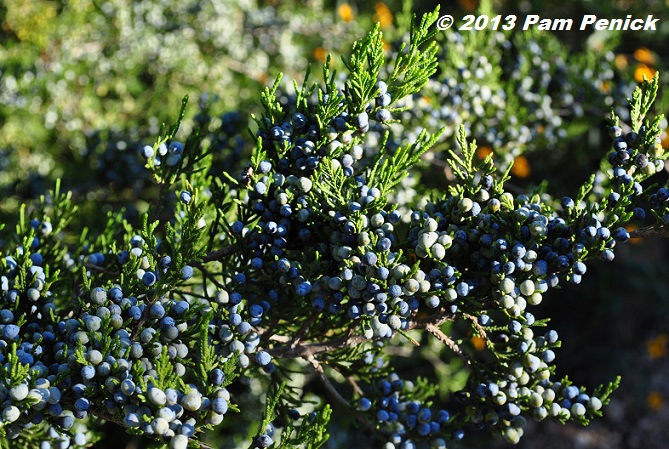
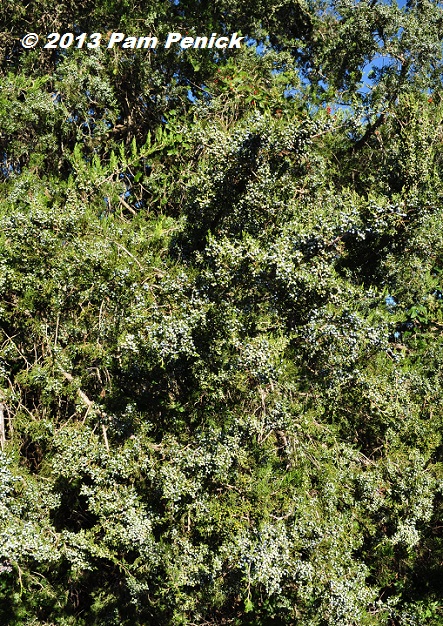
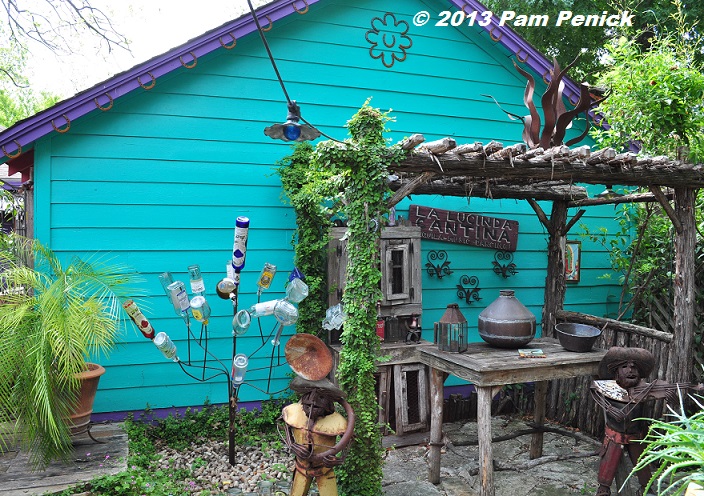
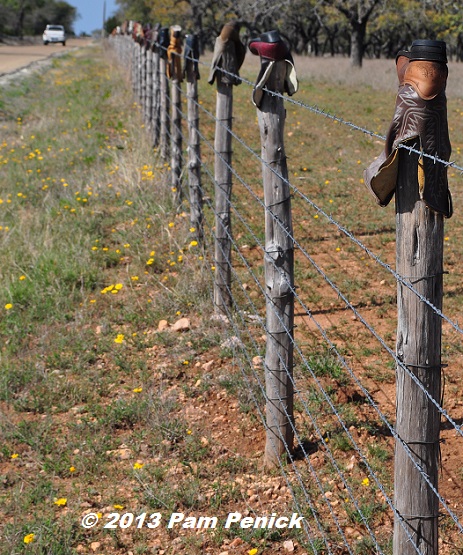
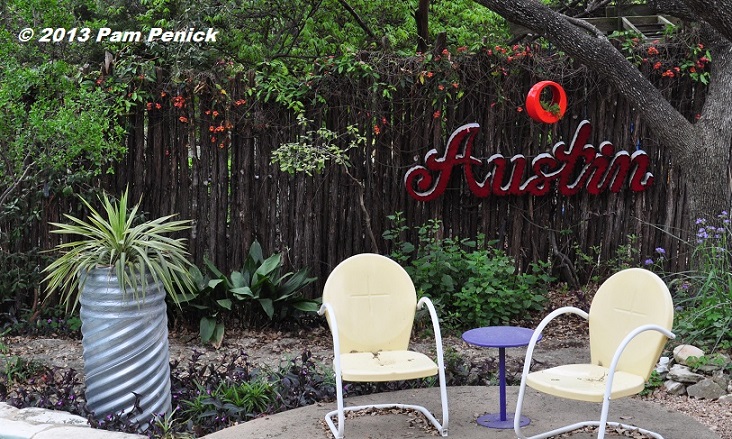
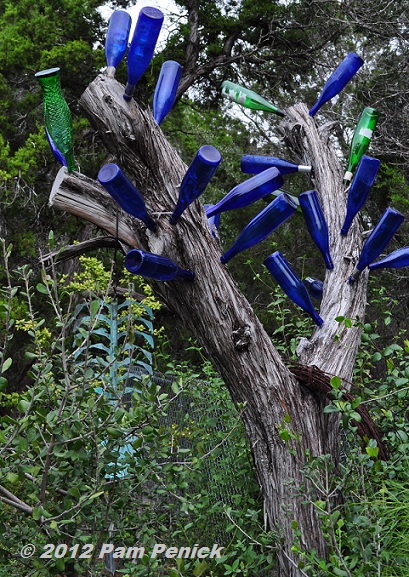
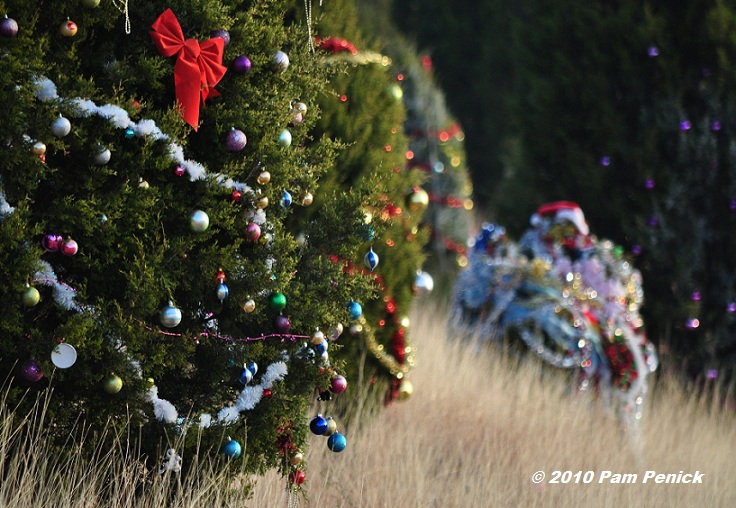
I can’t imagine our hills without the cedar trees and I’m sad to see so many land owners clearing them away. My grandparents usually had a cedar Christmas tree in their Austin home so you photos bring back many memories.
Posts, arbors, benches made from them are a natural in our gardens.
Plan a visit to family or friends to escape for a few days.
People hate the red cedars around here. I happen to like them even though they can get a little out of hand. Pine trees give me the allergy reaction. whew… I know what the haters hate about the cedars.
When the drought hit, the cedars were some of the first trees to die on our property. I assumed it was because they needed more water then the oaks, but I don’t really know for sure. The drought has significantly reduced the number of cedars out my way. We’ll see if that translates to a better allergy season ahead.
Sorry….I like the dead ones best. I know that is terrible to say! Maybe after allergy shots I will change my mind! 😉
Hey, you’re honest, Heather! Ask me again in a month and see if I’ve changed my own tune. —Pam
We don’t have a lot of cedars around here. I suppose a lot were cleared out, when they developed this neighborhood years ago. Some of the ones still here died during the horrible summer of 2011.
Pollen of any kind can be a problem. Luckily I don’t have a cedar problem. Mold is my problem. Joy…joy.
I do love all the things that can be made from the cedars…peeled or unpeeled. Love that rustic look.
I sympathize, I used to get hay fever from the canyon scrub plants in California, but nothing up here. I found a natural remedy though, most people probably won’t bother but it works great, I would eat Tripe (cow stomach), just a few square inches a day for a couple of weeks, and the mucopolysaccharides, also called proteoglycans, in the tripe are an important component of cartilage and the extracellular matrix. They function to glue the weeping, itching cells of the body back together and cancel the allergic reaction. Tripe is found in the Mexican Menudo soup, and also in Chinese cuisine cooked with ginger and onion, the way I learned to cook it. It was the chewy stuff I liked in Campbell’s Pepper Pot soup as a child.
I love cedars…..It sounds like you have many of them if they cause such allergy attacks. We had them as a natural fence on our property line for years…..all kinds of critters enjoyed them. I plan to find a small one for the yard just for that purpose.
We removed cedar in the middle portion of our 5 acre lot and have been Amazed at the natives that have appeared in their place. We left the remaining junipers for privacy and am so glad that we did. First growth juniper are Tall and Beautiful and important to keeping
South Central Texas like it is supposed to look. There are too many landscapes that look like “somewhere else” for my taste. I love your blog, Pam. Thanks…Laura from Boerne
Thanks, Laura! It sounds like you were thoughtful and selective about which cedars you removed, and now you are reaping the rewards. I agree completely about letting one’s property have a sense of place that resonates with the larger landscape. Exceptions can be made (and can be fantastic) if you’re creating a dramatic or themed garden. But most gardens look best if they look like they belong to their region, via plant and hardscaping choices. —Pam